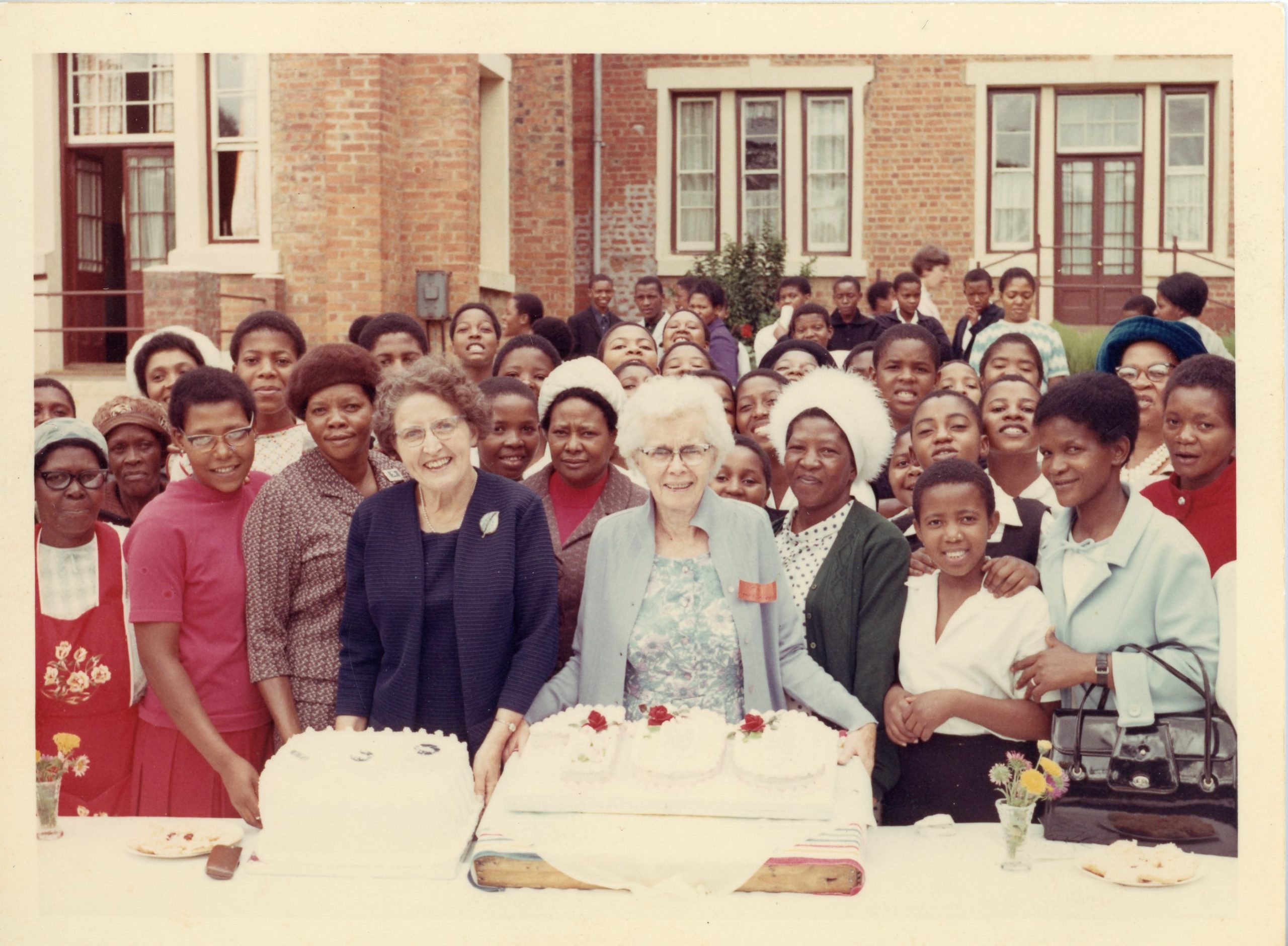This post is one in a series about the Lavinia Scott papers processing being completed by Assistant Processing Archivist Meghan Glasbrenner.
There are two main pieces to any major processing project: physical preservation and intellectual arrangement. While each involves different challenges and approaches, they are both vitally important for short and long-term access of materials, the first centering on sustainable storage and the second on understanding. These are standard processing steps taken for all material types in a collection, for example removing rusty metal fasteners from paper items and moving previously folded oversized items, such as posters and maps, into appropriately sized storage. Unsurprisingly, the photographs in the Lavinia Scott papers, of which I estimate there to be between 2500 – 3000, presented a clearly pressing need for both physical rehousing and archival arrangement. As an example, let’s look at this shoebox of photographs:

Top and side view of the shoebox as it was discovered during surveying of the collection
In this case, the importance of the first step, physical preservation, was immediately clear. The shoebox that had been used for informal storage was both deteriorating and far too small for the number of photographs it contained. Additionally, the photographs were further stored in acidic envelopes, many of which were held together with dried out rubber bands, and some individual photographs were grouped using ribbon or metal paper clips. The combination of these not only made the photographs difficult to examine, but overtime had caused severe curling, staining, and other damage.

While the image itself remains largely undamaged, this type of physical change can impact the long-term stability of the print

A group of postcard style photographs that have fallen victim to the dangers of temperature and time

Acidic envelopes and dried out rubber bands can lead to staining and sticking

Photo groups, including one with a rusty paperclip

A group of photographs tied together with ribbon
To address these issues, each individual photograph will be placed in its own protective Polypropylene pocket and stored in an archival binder so that the photos will not only be physically protected, but also easily handled by researchers.

Example of what the final storage for all photographs in the collection will look like
In addition to these clear preservation issues, this type of storage can also impact intellectual access and understanding. While the photographs were separated into distinct groups in the individual envelopes, most of these contained little to no identifying information to provide context for the images themselves or were simply labeled “Very miscellaneous”. Such labeling is typical for personal photographs, as the original owner often knows what the groups contain, but is not ideal for use in a research setting.

Without further identifications maintaining these groupings can actually impede access and understanding
While intellectual arrangement of photographs can be a time consuming, and at times frustrating, part of collection processing, it’s a necessary step that can lead to greater understanding of the people, places, and events represented in the collection as a whole. This is where original inscriptions written or stamped on the backs of the photos become an invaluable resource.

Front and back of a photograph that includes a detailed inscription
While many of the photos in the collection include detailed identification of individuals, locations, and dates, many others include either no identifying information or have inscriptions that while amusing and intriguing are ultimately not always helpful in identifying the full content or context.

Front and back of a photo with an amusing inscription that provides little other context aside from the general location. Clearly, there is a story here!
But perhaps most frustrating are those photos that include no inscription at all, making identification difficult without proper context. In cases where identification is not presently possible, it is often best to keep the photo in its “original order” grouped with those surrounding it until new information may be revealed at a later time. However, by organizing the photographs that I can identify into appropriate subseries groupings, I am sometimes able to match the visual content to other images that contain identifications. Take this photo:

Example of one of the many photographs lacking any identifying inscription
As a single photograph this image lacks any easy identification; it is simply a building under construction. Fortunately, in this case, I was successfully able to identify this image as part of a group documenting the construction of the Lavinia Scott Chapel at Inanda Seminary based on several other photographs in the collection with detailed inscriptions.

Inscription: “Agnes Wood & Lavinia Scott Cutting the Centennial Cakes – Inanda Seminary, Mar. 2 ’69”
And this is what makes the time worth it; preserving the physical integrity of these snapshots of history, increasing access and understanding for researchers, and revealing items and pieces of information that would have been otherwise overlooked or hidden. Processing of the photographs has already revealed extensive images capturing the history of Inanda Seminary, including student and faculty/staff life, the 1969 Centennial Celebration, and the evolution of the physical campus environment, and these are just a small portion of the over 80 years of coverage contained in the collection’s of the photographs.
Follow SCRC on Social Media and look out for future posts on our Facebook, Instagram, and Twitter accounts. To search the collections held at Special Collections Research Center, go to our website and browse the finding aids by subject or title. You may also e-mail us at speccoll@gmu.edu or call 703-993-2220 if you would like to schedule an appointment, request materials, or if you have questions.

